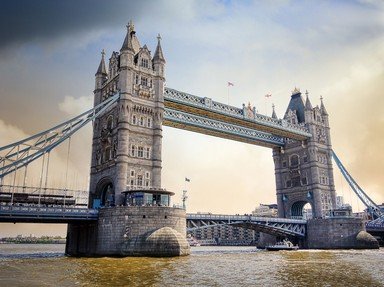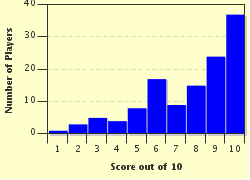Quiz Answer Key and Fun Facts
1. I'm in a town that was featured in the novel "Dracula", was the location of a church synod that decided when Easter would be celebrated in England, and also has an abbey once led by St. Hilda. Where am I?
2. I'm in the north of England waiting for the tide to go out so that I can use the causeway to reach the abbey on Holy Island. This abbey was famous for producing the illuminated manuscripts and its bible is one of the treasures of medieval England. Where am I?
3. I'm now in the northwest part of England in a famous beach city known for its Illuminations display at the end of summer and its tower. Where am I?
4. I'm at the site of the Roman city of Eboracum. The future emperor Constantine the Great was stationed here when his father Constantine I died while visiting. The younger Constantine was then named as his successor, although he still needed to defeat two other claimants to the title. What is the city of Eboracum now called?
5. I'm now at a location that fell under German control during most of World War II. In which of these places could I be?
6. I'm visiting a haunted battlefield near York that was a turning point in the English civil war between the Cavaliers (royalists) and Parliamentarians under Oliver Cromwell. At which of these locations would I be?
7. I'm in another picturesque city famous for the Royal Crescent, Pulteney Bridge, Sally Lunn, Jane Austen, Beau Nash, and Georgian buildings. The entire city is a UNESCO World Heritage site, the only such city in England at the beginning of the 21st century. Where am I?
8. I'm at Chatsworth House in Derbyshire, one of the most beautiful estates in the UK. Highlights of the visit include the rolling grounds known for the Cascade, Emperor Fountain, and Serpentine Hedge, all designed by a master landscape artist. He designed the grounds for over 170 estates, including Blenheim, Warwick, and Castle Howard. We celebrated the 300th year of his birth in 2016. Who is this landscape designer?
9. I'm now on an island that is the point farthest north in the United Kingdom. Where would that be?
10. I'm in Wales visiting a quaint village that Sir Clough Williams-Ellis constructed between 1925 and 1975 in an Italian architectural style that he loved. It's on the must-see list of fans on the classic TV show "The Prisoner", since it served as the "village" in the series. You may recognize the name of the village by other items in your home that use the name of this village as a brand name. Where am I?
Source: Author
SixShutouts66
This quiz was reviewed by FunTrivia editor
spanishliz before going online.
Any errors found in FunTrivia content are routinely corrected through our feedback system.


